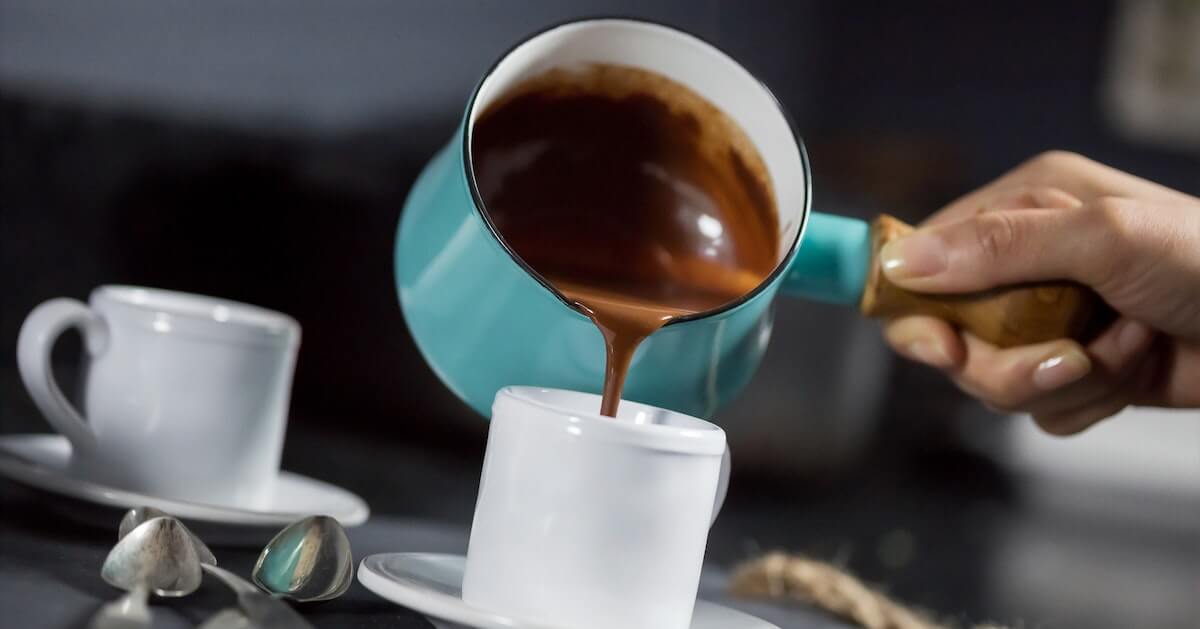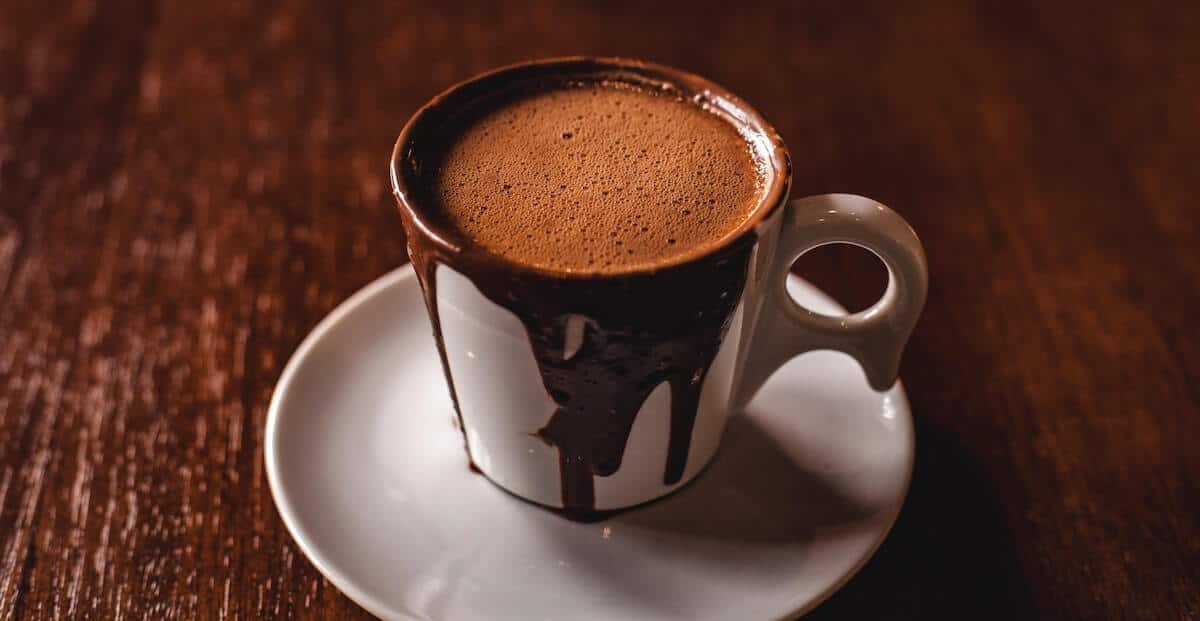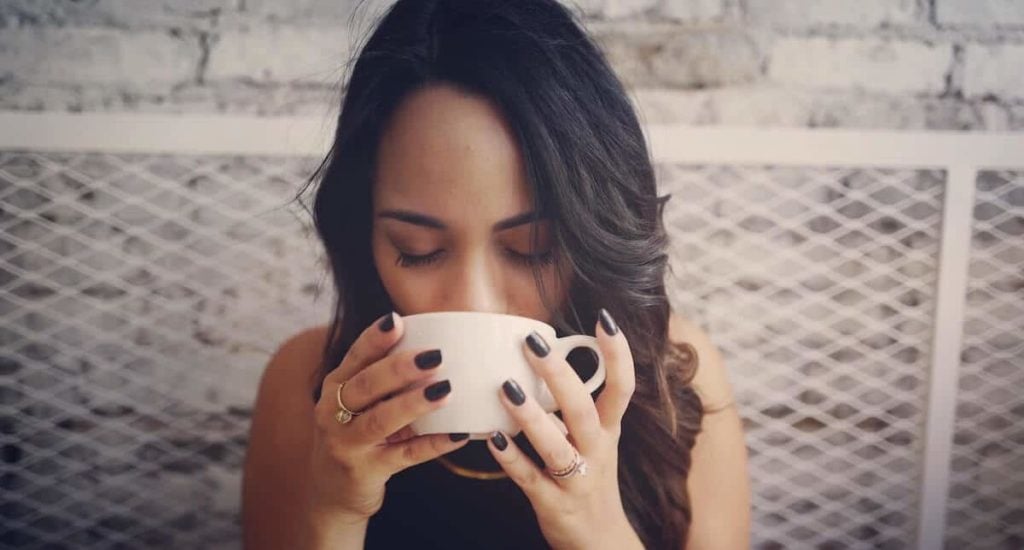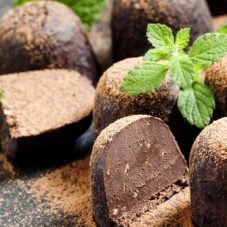Have you ever been to a cacao ceremony? If not, it should definitely be on your bucket list! It’s an experience you will never forget in your life, and one you may be compelled to do again and again. With all the curveballs life throws at you, it’s sometimes hard to appreciate all the good things you do have. So, if you find yourself stuck and can’t figure out your next move, maybe a mind-opening cacao ceremony is exactly what you need!
Table of Contents
So, what exactly is a cacao ceremony?
In a nutshell, a cacao ceremony celebrates the sacred healing powers of cacao. It allows you to reconnect with yourself and others. It promotes healing and creativity, mindfulness and joy, and a whole lot of positivity.
In some ceremonies, people gather around in a circle, drink cacao and meditate together. Other ceremonies may be livelier and may involve some dancing, breathing exercises, or some other ritual to loosen up and invoke the spirit of cacao.
Generally, however, cacao ceremonies are an individual’s journey to clarity and enlightenment, so they can better understand how to navigate the world around them.
People who’ve attended these ceremonies attest to the power of cacao. Many say it’s helped them open their eyes and appreciate the things they have in life. For those who were struggling, the cacao was instrumental in helping them get back on their feet. It gave them the focus and motivation to finally take action and take control of their destiny.
How far does this go back?
The ancient Olmec, Mayan, Aztec and other Mesoamerican cultures in Latin America considered cacao as sacred. The tree, the pods, the seeds – all these were prized and highly coveted by these ancient civilizations. And who can blame them? Cacao was THE superfood of their time, long before superfoods even became a thing.
Centuries before the Europeans got their hands on cacao and turned it into the sweet chocolate treat we know today, the ancient Mesoamericans were using cacao for various rituals and ceremonies.
Cacao was considered “food for the gods” and reserved for the elites and ruling classes of society. It was so valuable they even used it as currency to barter and trade with each other – this is why Spaniards branded cacao as “seeds of gold”!
That said, the modern cacao ceremony is said to be different from how the ancient Mayans did it. No “cacao ceremony handbook” made it to modern times, if there ever was one written up. And that’s okay. Because cacao ceremonies aren’t about the past. It’s all about bringing clarity and introspection and love into your life, so you can move forward and live life with gusto!

Is cacao the same as cocoa?
Cocoa is NOT the same as cacao, even though both of them started from the seeds of the same tree, the Theobroma cacao. In Greek, Theobroma literally means “food of the gods.” Once you’ve experienced your very first cacao ceremony, you’ll understand why it is called as such.
Cacao
Raw cacao is the purest form of chocolate, lightly roasted and ground down from the bean. It’s extremely rich in nutrients like iron, protein, fiber, magnesium, potassium, and more. It’s the true chocolate superfood, not cocoa.
Think of cacao as the original form of chocolate loved by the Mayans and the Aztecs. It’s bitter and not at all the way you’d envision real chocolate would taste like, especially if you grew up eating sugary milk chocolate bars. Real cacao is thick, rich, and did I say bitter? It’s the exact opposite of your favorite chocolatey treats!
The taste will definitely take some getting used to. But once you’ve tried pure cacao in a proper ceremony, you’ll understand why it was so loved by ancient Mesoamericans.
Cocoa
Cocoa, on the other hand, is the adulterated version of cacao. It’s highly processed and roasted at very high temperatures before being ground to powder form. During this process, the cocoa is stripped of its fat (from cocoa butter). It loses the bitter taste, but it also loses much of its nutritional value.
When it comes to taste, I think most people will say cocoa tastes way better than cacao. But it’s not a fair comparison at all. Most chocolate brands sold nowadays only contain 20–30% cocoa. The rest is sugar, milk, preservatives, and other ingredients.
For anyone wondering if cocoa can be used in a cacao ceremony, the answer is no, obviously.
Is commercial cacao powder okay for use in cacao ceremony?
The cacao powder you see at the supermarket is still healthier than cocoa powder, but it’s NOT the same quality as ceremonial cacao. Commercial cacao powder is stripped of the natural fat from cacao butter, so you will not get the same experience like with ceremonial cacao (more on this below).

Does cacao have healing powers? What are its benefits?
If this is your first time hearing of ‘cacao ceremony,’ you’re probably wondering WHY CACAO? What’s so special about it?
Well, cacao isn’t just a healthy, nutritious drink. Here’s a short list of its most important properties which truly makes it a powerful superfood (no wonder it’s been popular for thousands of years)!
Theobromine
This psychoactive ingredient is a powerful stimulant. It’s similar to caffeine, but it won’t make you jittery and nervous. Instead, theobromine stimulates the cardiovascular system and makes you feel warm and euphoric, especially when taken at high, ceremonial doses (around 40g of pure cacao).
When theobromine takes effect, you’ll feel alive and aware and connected with the world. It opens you up to an experience unlike any other, which is what truly makes a cacao ceremony special.
Anandamide
This is also called the “bliss chemical” because it promotes, well, feelings of bliss and serenity. During the ceremony, you’ll feel at peace with yourself. At this point, you stop being so hard on yourself, you learn to forgive and accept yourself for what you are.
Serotonin
Yes, cacao contains serotonin, a.k.a. the body’s happy chemical. It helps stabilize our mood and gives us a feeling of happiness. In addition, cacao also stimulates the body to produce more “feel good” hormones, so expect positive emotions to be at an all-time high during cacao ceremonies!
Antioxidants
Cacao (not cocoa) is rich in flavonoids and has an extremely high antioxidant content. Antioxidants fight free radicals and reverse the damage these unstable atoms do to the body. Research has shown that raw chocolate or cacao has powerful anti-aging properties and can lower blood pressure and even improve overall heart health!
Magnesium
Plenty of foods contain this important nutrient, but raw cacao trumps them all. A hundred grams of cacao will give you 507mg of magnesium! The sad truth, however, is that most people are magnesium deficient.
If you’re not getting enough from cacao and your diet, consider supplementing with our MagEnhance Magnesium Complex. It contains 3 different types of magnesium – magnesium threonate, magnesium glycinate, and magnesium taurate.
Iron
Cacao is the richest source of plant-based iron (non-heme iron) in the world. You get 7.3mg of iron for every 100g of cacao!
Zinc
Zinc is critical to our immune system. The more zinc you take in, the more your immune system is able to fight off invaders and protect your body from disease.
Calcium
Per 100g, cacao has more calcium than 100ml of cow’s milk!

How to do a cacao ceremony?
There is no hard and fast rule on how to do a cacao ceremony. You can join a group led by a facilitator or spiritual guide, or you can do it solo or with a partner. You can do it out in the open or in a dimly lit room with some background music on. But there are a few common elements that tie these different styles, rituals and traditions together that make it a true cacao ceremony.
1) Prepare the ceremonial cacao
To harness the full power of theobromine in cacao, you need to use ceremonial-grade organic cacao. It is the purest form of cacao with all the fat, flavor, and nutrients still intact. The texture is extremely rich and chocolatey.
When choosing which ceremonial cacao to use, it’s important to know its history. Ask about the farm where it came from, the people who work and live there, and their relationship with cacao. You may also want to check if it’s fair-trade and shaman-blessed for a more authentic experience.
Ceremonial cacao also comes in different flavors, textures, and notes. Just like there are different varieties of coffee beans, there are also different kinds of cacao beans. Feel free to experiment until you find the perfect brand for yourself!
What’s the ceremonial dose like?
So, ceremonial cacao is extremely rich and thick, with a concentrated amount of nutrients and phytochemicals.
The suggested dose is 42g of shaved cacao paste (about ¼ cup). But if you’re new, you may want to start with half the amount and see how you feel. Don’t go beyond the recommended dose as you may experience nausea, headaches, and maybe even heart palpitations.
When does it take effect?
Depending on the dosage, it may take up to 30 minutes to feel the effects of ceremonial cacao. It will wear off in about 2-4 hours.

2) Create an intention space
This is the second key to a proper cacao ceremony. You can drink the most potent ceremonial-grade cacao, but if you don’t create a sacred intention space, you’ll most likely gain nothing from the experience.
In a group ceremony, the facilitator will ask the participants to state their name and what brought them to the ceremony. They’ll ask what they are seeking for in their lives or what they can use more clarity on. This is what’s known as ‘setting the intention’ in a cacao ceremony.
The facilitator may also set an intention for the whole group. It varies, but hopefully, you get the idea of what a proper intention is.
3) Let the cacao do its magic!
The next stage is to get people to loosen up. The methods used will vary from one facilitator or shaman to the next. But generally, most people will sing or dance or share their intentions and inner reflections.
By this time, the cacao’s healing powers will take hold and you’ll begin to open up to yourself and to others. The clarity will set in and it will allow you to let go of past trauma and negative energies that surround you. You’ll learn to be grateful for what you have, learn to be mindful of others, and be at peace with yourself.
How to do a personal cacao ceremony at home?
You can host your very own cacao ceremony at home. You can do it alone or host it for your friends who want to experience the magic of pure cacao.
While there are infinite ways of doing the ceremony, most people stick to personal meditation, journaling, taking a walk along a nature path or the beach, new moon meditation, etc.

Who should and shouldn’t join a cacao ceremony?
JOIN if you want to…
- Learn more about cacao and its healing powers
- Meet like-minded people in the community
- Heal from past trauma
- Achieve inner peace
Do NOT join if you are…
- Looking for personal 1:1 therapeutic healing
- Suffering from a serious heart condition, taking antidepressants or hypertension medication. Cacao is a vasodilator which means it lowers blood pressure, so it’s best to look at other forms of meditation. Maybe try laughter yoga instead?
Final Thoughts
A cacao ceremony may not be for everyone, but if you think you can benefit from more clarity and peace in your life, then give it a try. You literally have nothing to lose and so much to gain! If you’ve attended a ceremony before, why don’t you tell us all about it in the comments section? We’d love to hear about your experience!




